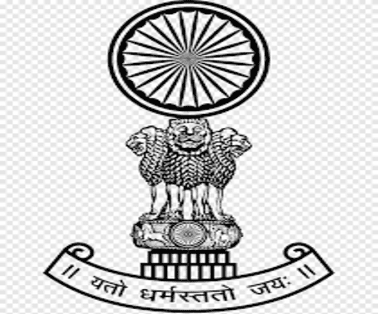About Women Reservation Bill
The women’s reservation bill sailed through the Upper House this evening, scripting history after decades of roadblocks.
Key Points
- As the Bill is a constitutional amendment, it will need to be ratified by half of the state legislatures before it can be sent for the president’s assent to become a law.
- The bill received unanimous support from the Rajya Sabha. There were no abstentions and no negative votes.
- The bill had cleared the Lok Sabha with the support of 454 MPs. Only Two MPs voted against it.
Details on Women Reservation Bill
- The Women Reservation Bill 2023 is formally known as the 128thConstitutional Amendment Bill or the Nari Shakti Vandan Adhiniyam
- The Bill states that one-third (33%) of seats will be reserved for women in the legislative assembly of the National Capital Territory of Delhi by amending Article 239AA, in the Lok Sabha by amending Article 330, and in state legislative assemblies by amending Article 332.
- It also reserves one-third of seats for women within the existing SC and ST reservations.
- The implementation of this reservation is contingent upon conducting a fresh Census and a delimitation exercise.
- The delimitation process involves defining the boundaries of territorial constituencies based on population changes.
- The Bill includes a sunset clause, stipulating that the reservation will be applicable for 15 years from the Act’s commencement
Background Of Women Reservation Bill
|
The journey of the Women’s Reservation Bill dates back to the early 1990s when India took its first steps toward political empowerment for women. |
|
The constitution was amended to reserve seats for women in Panchayats and Municipalities in 1992. |
|
Subsequently, the Constitution (81st Amendment) Bill, 1996 and subsequent bills sought to reserve one-third of seats in the Lok Sabha and state legislative assemblies for women. |
|
However, these early attempts faced obstacles and eventually lapsed due to various reasons, including a lack of consensus among political parties. |
|
The most recent attempt was made in 2008 when the bill was passed in the Rajya Sabha but lapsed in the Lok Sabha due to its dissolution. |
Implementation Of Women Reservation Bill
- The bill includes a provision that the new law once enacted will come into force only after a fresh census and delimitation
- Meaning that the women’s reservation is unlikely to be in effect in the 2024 Lok Sabha election.
- According to Article 82 of the Constitution, which was amended in 2002, the delimitation process can be carried out based on the first Census taken after 2026.
- The last Census in India was conducted in 2011. The next decadal census was to be conducted in 2021, but the COVID-19 pandemic delayed the timeline of the exercise.
- The exercise has now been pushed eight times with the official rationale of the pandemic.
- The 16th census is expected to be conducted in two phases: a house listing phase and a population enumeration phase.
- While there is no confirmation as to when the next census will take place, political leaders and experts have said that it will not likely be conducted before 2025 — this is if the house listing phase takes place after the 2024 Lok Sabha elections.
- If it is conducted in 2025, then the results are likely to be released only in 2026 or 2027.
- Article 82 of the Constitution provides for the readjustment of the constituencies (number and boundaries) of Lok Sabha and State Assemblies after every Census. However, the 42nd Amendment froze this delimitation exercise until the first Census after 2000 is published.
- In 2001, the government further extended this freeze for 25 years. So now, delimitation would happen on the results of the first Census after 2026.
Need Of Women Reservation Bill
- According to the Global Gender Gap Report 2022, India ranks 48th out of 146 in the Political Empowerment (Percentage of Women in Parliament and in Ministerial Positions) dimension.
- At present, only about 14.4% of the members of the Indian Parliament are women, the highest so far.
- Almost as many women as men cast ballots in the most recent Lok Sabha election in 2019, marking a turning point in India’s journey towards gender equality in politics
To Download Monthly Current Affairs PDF Click here
Click here to get a free demo
Everything About CLAT 2025
Frequently Asked Questions
When was the Women’s Reservation Bill first introduced in the Indian Parliament
Women’s Reservation Bill first introduced in the Indian Parliament in 1996
What is the Women’s Reservation Bill in India primarily aimed at achieving?
Women’s Reservation Bill in India primarily aimed at achieving Reserving seats for women in legislative
What is the official name of the Women Reservation Bill?
The official name of the Women’s Reservation Bill is Nari Shakti Vandan Adhiniyam
What is the proposed reservation percentage for women in the Women’s Reservation Bill?
The proposed reservation percentage for women in the Women’s Reservation Bill is 33%



